Mark Sisson's Blog, page 334
July 5, 2013
We Have More Energy to Be Better Partners, Parents, and People
It’s Friday, everyone! And that means another Primal Blueprint Real Life Story from a Mark’s Daily Apple reader. If you have your own success story and would like to share it with me and the Mark’s Daily Apple community please contact me here. I’ll continue to publish these each Friday as long as they keep coming in. Thank you for reading!
 It has been an ongoing struggle to “find the time” to write this letter. As Mother’s Day has recently passed and Father’s Day is approaching, I think the time is NOW!
It has been an ongoing struggle to “find the time” to write this letter. As Mother’s Day has recently passed and Father’s Day is approaching, I think the time is NOW!
My name is Cailey and I am soon-to-be 31 years old. I am a wife, a mother of two daughters, and a speech-language pathologist at an acute care hospital. Our journey began 5 years ago when my fabulous, 60-something, mother-in-law introduced me and my husband to the book, “Good Calories, Bad Calories,” by Gary Taubes. Our initial reaction was wariness and disbelief. My husband and I have always been relatively healthy children and young adults; however, by the time we married in 2007 conventional wisdom had led to a 30 lb and 5 lb, respectively, weight gain from when we met in 2002. My husband’s weight gain was gradual, evenly distributed, and no one really noticed. In private I would lovingly joke “baby got back.”

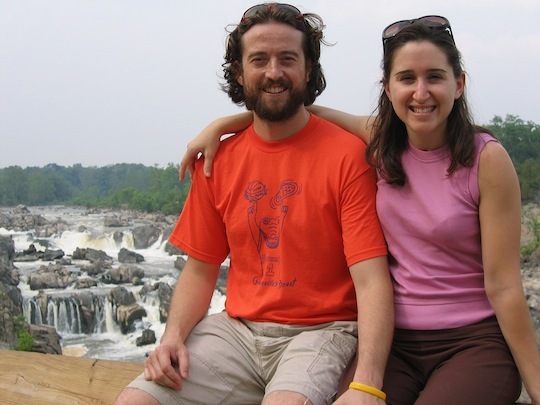
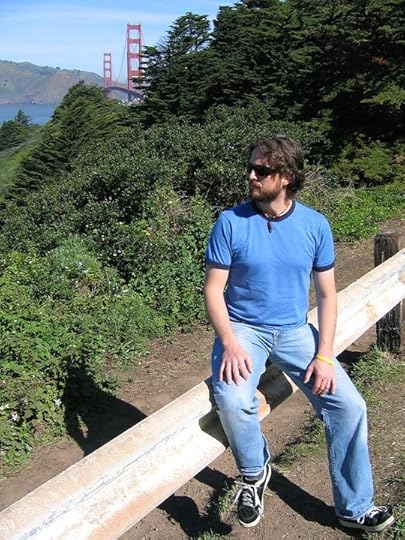
After many heated family discussions about health, we are all passionate and opinionated people, my husband’s interest was piqued. My mother-in-law (pictured below) generously bought almost every single person in our family, The Primal Blueprint, by Mark Sisson and my husband was hooked. As my husband devoured all material related to the primal/paleo lifestyle, I decided to go along for the ride.
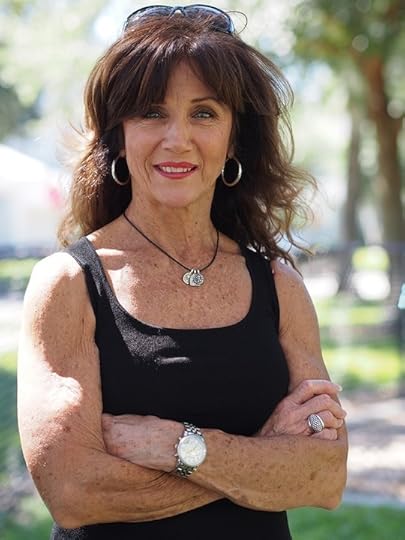
At this time I was in my first trimester with my first daughter. The first thing we did was cut out breakfast cereal and replace it with eggs. My self diagnosed hypoglycemia vanished along with my need to snack every 3-4 hours to prevent nausea, the shakes, and general moodiness. We were about 50% in line with primal/paleo eating. Consequently, I gained 50 lbs and it took 18 months to lose the weight (in part due to well meaning friends sending casserole after casserole). By the time my daughter was ready to eat solids we were so entrenched in this lifestyle we never hesitated in choosing to avoid all baby cereals and grains.
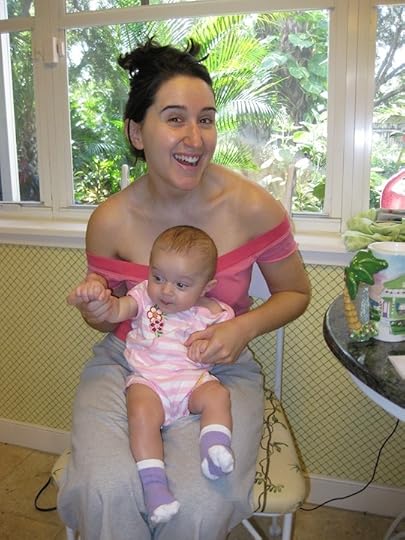
Fast forward a couple of years and I was pregnant with my second daughter, my husband had lost the 30 lbs and eradicated years of heartburn, and my mother-in-law had slowly infiltrated the minds of friends and family. At 75% in line with paleo/primal lifestyle I gained 23 lbs, 9 lbs to lose when I left the hospital, and lost it in 3 months.
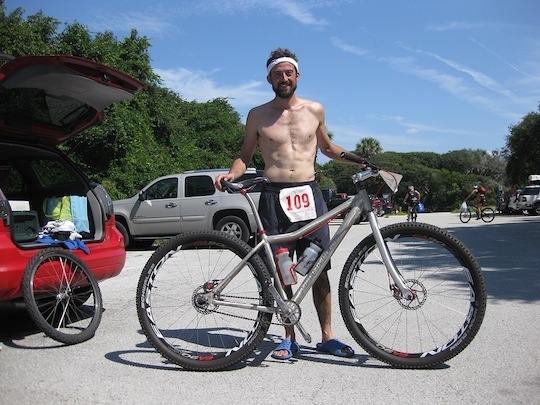
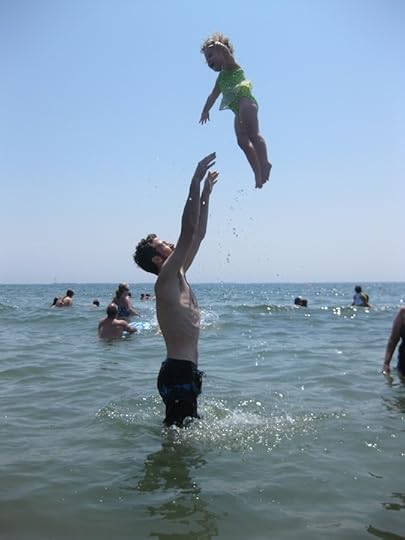
Presently, our family is 90/10, our eldest daughter is 4 years old, and her staple foods consist of: turkey/cheese roll-ups, kimchi, fermented pickles, nuts, plain yogurt, berries, and local meat and veggies. She has a deeper understanding and appreciation for food that will make her “strong” vs food that will make her “sick” than most adults I interact with daily at work in healthcare.

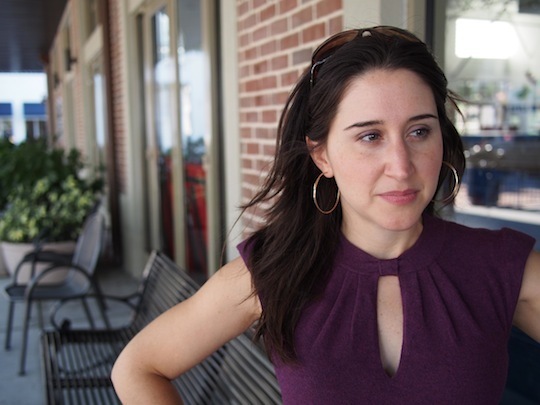
We are very fortunate to live in a progressive college town in north central Florida with access to local grass fed and finished meats, local cheese, and local and organic veggies/fruit from our CSA (community supported agriculture). The primal/paleo lifestyle works in perfect harmony with the local food movement. This lifestyle IS living in accordance with the land and part of how we will move forward as a society and thrive. Paleo/primal living is mindfulness in action and a reminder of the interconnectedness of everything. In Be Free Where You Are, written by Thich Nhat Hanh, a Vietnamese Buddhist monk says, “one string bean contains the whole cosmos in it: the sunshine, rain, the whole Earth, time, space and consciousness. You also contain the whole cosmos.”
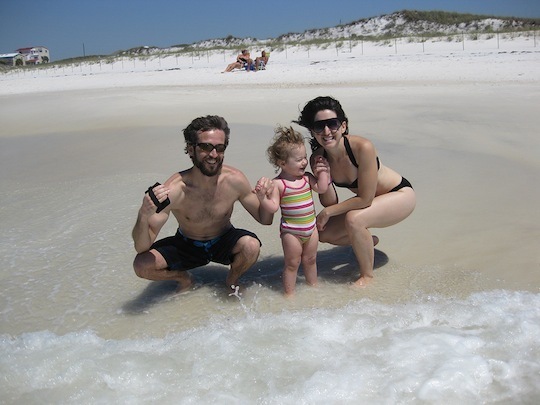
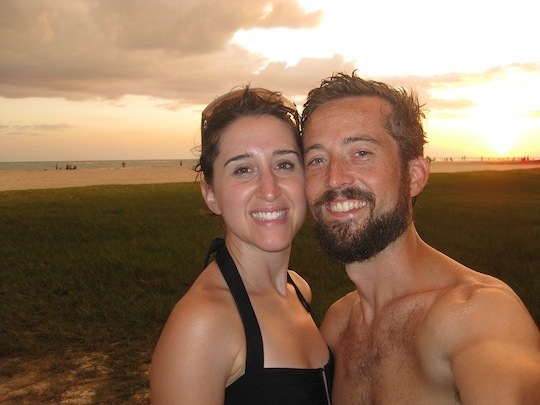
As we received the countless benefits of this lifestyle we shared it with everyone we possibly could and pissed off a few people along the way. Unfortunately, not everyone is ready to listen and one must meet others where they are at. So, instead of shouting from the rooftops, we now politely use our indoor voices, and show rather than tell. As the musical group The Avett Brothers so eloquently put it, “decide what to be and go be it.” When people see how happy, strong, and healthy you are they will ask, “What do you do?”
We have incorporated the primal/paleo lifestyle into our daily routine. In doing so, we have more energy and time to be better partners, parents, and people.
Backyard gym/play set (pull ups, push ups, squats, shoulder presses, and planks) we all play together
Family walks
Own 1 car, if possible (forces both of us to commute to work by bike or bus)
Join a CSA or go to your local farmer’s market (you will see and try things you never knew existed!)
Limit eating out (saves money, time, and poor eating choices, ie. bad oils)
Do not buy packaged food (if it can live indefinitely in a box, it is not fit for human consumption)
Intermittently fast instead of eating crappy conference, cafeteria, and fast food
Make time for cooking, everyone has the time, it’s what you choose to make time for that matters
Involve the family in food prep (my 4 yr old uses a real knife to cut soft veggies/fruit)
It is impossible to emphasize how much simpler yet more meaningful the paleo/primal lifestyle is for my family. I have attached some pictures of us. Sorry, no dramatic before and after shots, I love them as much as you do. Just grateful people smiling back at you!
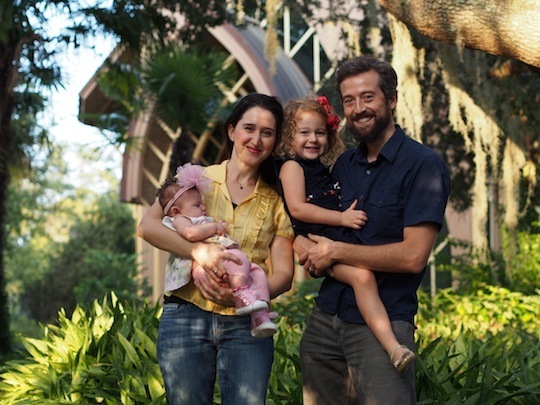
Finally, I have to come come clean and be honest about the timing of this letter. Of course, it is a big whole-hearted thank you to Mark. You have changed the course of my family and friends lives. This is also a late Mother’s Day present to my evolving, full of life and love, mother-in-law, a true inspiration for me. Lastly, a love letter to my husband for Father’s Day – someone who is always ahead of the curve, inspires me to do better, and makes our world a kinder, gentler place.
Namaste,
Cailey
Independence Day Sale: Through Sunday, July 7, Get 10% Off Any Single Item at The Official Store of Mark's Daily Apple When You Use Coupon Code "julygroks" During Checkout>>

July 4, 2013
Why You Should Let Yourself Succeed and Go Get the Life You Want
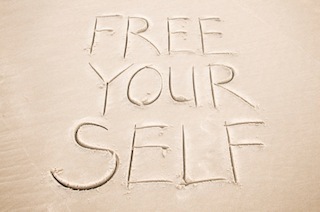 How many of us get in our own way when it comes to leading the best life possible? The forms of self-obstruction are many and varied: We might only be dutiful about small changes. never taking the important big steps. Or we might hem and haw, cycling back and forth between rigor and passivity. We perhaps commit to improvements in certain health dimensions but forgo effort in others. We feel good about our positive choices but back away from scrutinizing the half measures. “I’m just too busy to do more than I’m already doing.” “I’ve made it further than I ever thought I could: I’ll quite while I’m ahead.” “I’m doing better than most people I know.” “This amount of change is manageable. I don’t want to push the envelope.” We tell ourselves a million things on the precipice looking out from good to great. There might be a hundred circumstances legitimately figuring into our decision to stay where we’re at in the “good enough,” but we need to be honest. Is there something in the view itself – the overlook to bigger success – that causes us to seize back consciously or unconsciously?
How many of us get in our own way when it comes to leading the best life possible? The forms of self-obstruction are many and varied: We might only be dutiful about small changes. never taking the important big steps. Or we might hem and haw, cycling back and forth between rigor and passivity. We perhaps commit to improvements in certain health dimensions but forgo effort in others. We feel good about our positive choices but back away from scrutinizing the half measures. “I’m just too busy to do more than I’m already doing.” “I’ve made it further than I ever thought I could: I’ll quite while I’m ahead.” “I’m doing better than most people I know.” “This amount of change is manageable. I don’t want to push the envelope.” We tell ourselves a million things on the precipice looking out from good to great. There might be a hundred circumstances legitimately figuring into our decision to stay where we’re at in the “good enough,” but we need to be honest. Is there something in the view itself – the overlook to bigger success – that causes us to seize back consciously or unconsciously?
Maybe we fear ultimate success because we don’t like change, because we don’t think we deserve a truly great life, because we can’t imagine ourselves being “that” person – the person who has it together, the person who is really fit and optimally healthy. “Optimum” anything, we tell ourselves is too extravagant. It’s for the lucky few or maybe just better-adjusted many. We might even tell ourselves we don’t “need” optimum, that we’d be just as satisfied with good. No. Trust me – you won’t be just as satisfied.
Sit back and play a game for a minute. Imagine yourself in that “optimal” existence (e.g. of health, of vitality, of self-fulfillment). Imagine all the amazing things you could want but think are too lavish for you somehow. Imagine living that very life. Are you getting uncomfortable yet?
Sometimes we keep deeper success at arm’s length because we’re afraid of what we’ll be called on to challenge or give up about ourselves. More than weight or weakness, sometimes our self-concept is the hardest thing to shed.
In some dark, hidden corner of ourselves, we stop short of believing we can have it really good – that we should have it really good – that we deserve to have it really good. The corner stubbornly refuses to be filled or changed or otherwise improved, choosing to retain some portion of deprivation. Obscured, perhaps long-entrenched messages limit our thinking in this way. We’re conditioned to not ask for too much from our lives. We were taught to not aim too high or expect too much. Think of how this might play out for you and in what areas of your life – relationship, vocation, social life, creative life, body image, fitness, etc.
Maybe we survived parts of our lives by learning not to expect much. Our circumstances in those situations were the inputs in our personal adaptation. However helpful these patterns were in the past, at some point we need to understand that they do nothing but hinder us in the present. This is not the script we have to go through life with. If it doesn’t serve you any more, stop repeating it. Understand what you need to about what went into it (i.e. why the messages are what they are). Accept being uncomfortable and lean into the self-defeating parts until you’ve managed to diffuse their influence. Then let it all go.
More importantly, fill your life now with different messages that will come together in a new script. Sure, it will take a certain amount of retraining. However, with time you’ll be able to rewire your thoughts and shift default tracks. Next time you begin to make a choice that isn’t in your best interest, remember it doesn’t have to be this way. Don’t beat yourself up about it. Simply tell yourself, “I could do it differently. I may be doing this just because it’s comfortable/easy – or not doing that because it would require a personal change in identity (i.e. I’m now the person who says no to bread. I’m now the person who prioritizes my sleep and doesn’t stay out until all hours. I’m now the person who makes the effort to get to the gym instead of happy hour.) Other times, we find we don’t think big enough in envisioning our goals.
This isn’t about perfection, mind you, but it is about letting yourself succeed. It’s about giving yourself a shot at expanding your expectations. It’s about saying no to sub-consciously self-sabotaging and yes to what is possible but perhaps entirely obscured by your own assumptions about what is attainable and what you deserve. It’s about doing exactly what you probably don’t want to do – push the envelope.
Let me tell you this right now in no uncertain terms: you get to have optimal health when you’re ready to own it (and, yes, work for it). You get to have vitality when you feel you deserve it. You get to have deep and genuine well-being in as many areas of your life as you’re willing to let it take root. Sure, your journey and version of success will be unique. The fullness of life isn’t any more generic than life itself. The experience of it – the nuances and gratification – will undoubtedly surprise you. The key is first being open to the Primal potential itself.
Thanks for reading today, everyone. Have you ever been your own impediment? What would you add to the idea of letting yourself succeed? Have a happy and safe 4th of July.
Independence Day Sale: Through Sunday, July 7, Get 10% Off Any Single Item at The Official Store of Mark's Daily Apple When You Use Coupon Code "julygroks" During Checkout>>

July 3, 2013
5 Things I Still Struggle With
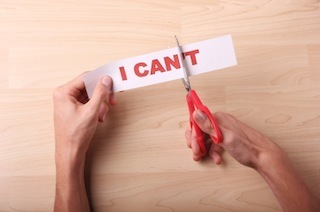 When it comes to living a healthy, Primal lifestyle, for the most part I’ve got things dialed in. There are very few things, if any, I’d change about my eating plan, my workouts, or my sleep schedule, for example, but there are some areas in which I know I can improve. Some major, some not so major. Like everyone does, I’d imagine. Nearly all of my struggles are related to finding a deeper sense of peace and contentment in this hectic modern world. In fact, I selfishly wrote a book, The Primal Connection, to give myself more tools and strategies to achieve the sense of satisfaction and fulfillment from within that we all seek. (The book, you may be happy to know, recently won the Eric Hoffer award for best self-published book of 2013.)
When it comes to living a healthy, Primal lifestyle, for the most part I’ve got things dialed in. There are very few things, if any, I’d change about my eating plan, my workouts, or my sleep schedule, for example, but there are some areas in which I know I can improve. Some major, some not so major. Like everyone does, I’d imagine. Nearly all of my struggles are related to finding a deeper sense of peace and contentment in this hectic modern world. In fact, I selfishly wrote a book, The Primal Connection, to give myself more tools and strategies to achieve the sense of satisfaction and fulfillment from within that we all seek. (The book, you may be happy to know, recently won the Eric Hoffer award for best self-published book of 2013.)
While I’ve made some strides in these areas in recent years, the journey is never over. There is no perfect lifestyle or perfect diet or perfect workout. We all have something, or some things, we’d like to get better at. We all have struggles. So, today, I thought I’d share with you guys some of my personal struggles, as well as some ways for addressing and even overcoming them.
Stress Management
For all the posts I’ve done on the subject, all the advice I’ve doled out, all the focus I’ve given it, stress remains my biggest struggle. And, from talking to lots of you guys, this is a common issue in the community. The reason why stress continues to vex us, even if we’ve come to terms with our diet, fitness, and sleep? Stressors exist everywhere and they are non-specific and often non-material. They can be anything – or anyone – and the stress that results is intangible. You can choose not to eat the cupcake, but you can’t choose not to drive to work in traffic, pay your bills, or hear the neighbors’ insanely loud music at 2 AM. I suppose you could avoid opening the envelope containing the overdue notice on your mortgage, but that’s not really managing stress. That’s actually compounding it. The problem’s not going anywhere, and it actually intensifies the longer you ignore it. The cupcake you declined? That’s it. It’s done. You’ve said “no” and it ceases to impact you. Stressors are different. They linger. There’s no easy way to deal with them or the stress they produce.
And so we must manage our stressors, we must prepare ourselves to deal with the inevitable. That can be really, really tough. Another problem with the intangibility of stress? It’s tough to know when you’re truly managing it successfully. There’s no instant feedback. Even a stress management technique as relatively concrete (in the sense of “I’m taking active steps to manage my stress”) as meditation doesn’t deliver instant results. Heck, it can take months or years of consistent practice to derive tangible benefit. So when I try to manage my stress, it’s hard to know if it’s working or not. I’m an instant feedback kind of guy. That’s how I operate best. When that feedback doesn’t materialize right away, I struggle.
How I deal: I’m still working on this one. I’ve done a bit of meditation (too formal for my tastes). I’ve tried avoidance (impossible and ultimately ineffective). What seems to work best is filling up on nature. I’ve come to realize that I can’t avoid stress. It’s there and if I want to keep doing what I’m doing, it’s unavoidable. But if I can get out into nature several times a week, preferably every day, I feel markedly better. “Nature” can mean a hike through Topanga Canyon, a few hours of standup paddleboarding, lounging on the beach, a weekend camping trip in the Sierras, or even – if I’m really desperate – a game of Ultimate Frisbee in the park. As long as I can get the grass (or sand, or dirt) between my toes and some greenery in my periphery, I can deal with the stress. It doesn’t last for long, though. I have to keep re-upping my nature intake.
Staying in the Moment
I’ll often notice my mind drifting away, mid-conversation, mid-reading-a-book, mid-watching-a-great-flick, mid-workout, mid-anything-that-deserves-full-attention. It’s not that I try to think of the post I’m writing, that meeting tomorrow, or what I’m eating for dinner that night when talking to another person. Those thoughts just drift in and seize hold of my attention. The problem is that however momentary the lapse in attention on the here and now, it’s disruptive and off-putting (especially if you’re in the midst of a conversation) and ultimately cheapens the experience of everyday life.
How I deal: I can’t avoid those thoughts, but I can stop myself from focusing on them. Lately, I’ve had success by changing how I perceive the exchange. My mind isn’t drifting to other thoughts; other thoughts are drifting into my mind, which stays in the same place. This reframing allows me to acknowledge, briefly analyze, and then ignore the incoming thoughts. They’re there, and I know it, but I don’t let them seize control of my attention. If they happen to be important thoughts with a legit claim to my attention, I can switch over. But it’s under my control, at least in theory. It seems to be working so far.
Staying Off the Phone and the Laptop When I Know I Should Be Chilling with Friends and Family
The Internet is an amazing resource offering untold delights. With a few taps on the keyboard, you’re privy to untold reams of knowledge vaster than any library, historical, fictional, or otherwise (except maybe the Hitchhiker’s Guide to the Galaxy – the electronic database depicted in the book of the same name, not the book itself). And it’s always growing, moving, living, responding – in real time. You don’t just read an article, you read the comment section that unfolds before you and often contains better stuff than the article itself. You don’t just read a single Wikipedia entry and then power off the computer. You start clicking links, bouncing from Roman mythology to astronomy to astrology to mythological dragons to cryptozoology to Bigfoot to famous hoaxes to the JFK assassination to Vietnam until you’ve fallen down a Wikipedia rabbit hole and emerged moderately more knowledgeable than you were before. It’s great, and that’s what makes it so irresistible and addicting.
It doesn’t help that much of my work takes place on the computer or phone, whether it’s responding to emails or taking meetings online or conducting research for blog posts. If I want to keep doing what I’m doing, I need to be connected, which makes it easy to come up with justifications for using it all the time. But I don’t need to be connected during dinner with the family. Or when out for drinks with some friends. My brain may “think” it needs to check that email or respond to that text, but I know better. Even though I “want” to grab the phone because it’s been twenty minutes since I last checked my email, I ultimately can refrain from doing so.
How I deal: This is a constant struggle, but actually physically powering the devices down when I know I shouldn’t be using them has really helped. So, if I go out to dinner, I’ll often turn my phone off. It’s there if I need it, but it’s not tempting me. If I’m at home with the family, I’ll shut my laptop down. It’s a simple and effective solution. Powering something back on is just difficult enough to dissuade you from constantly doing it on a whim.
Learning to Say “No”
I’m constantly in “go” mode, as I alluded to earlier. I’m always looking for a new experience, something bigger, something better. And the bigger MDA and the Primal community has gotten, the more opportunities I’ve had to get involved in extremely cool projects. It’s hard to say no to them, and I rarely do. There’s an innate desire, in everyone, I think, to devour new and “awesomer” experiences. It’s that very Primal part of me that just wants as much as he can get. Thousands of years ago, when the world was very small, when traveling thirty miles took an entire day (not twenty minutes) and relaying messages required physical transportation of that message (not a click of a button), we could go for every opportunity and stay grounded because, well, there weren’t that many opportunities. The number and scale of opportunities in the ancestral environment were inherently limited.
Now? Now I can get an invitation from a guy in South Africa to speed off for a safari. Now I can get fifty emails a day requesting my participation in some project or another, and most of them sound great. And because everyone’s so interconnected, and data is so widely available, and cool ideas are mating with cooler ideas, people are coming up with fascinating opportunities. It’s really, really hard to say no. But say no I must, because our bodies are still meat machines limited by physical realities.
How I deal: With the help of an assistant, I break down what I have to do, what I’ve already planned to do, and what I’d like to do, then set a “venture limit” each month based on my schedule. It isn’t perfect, but it does help keep me accountable to someone that’s not me.
Turning My Brain Off
Our brains are “us.” Quite literally, our hopes, our dreams, our personalities, our consciousness, our sense of self – they call come from the brain. With that in mind, the idea of turning off the brain is scary. I mean, won’t that kill me? Or, at the very least, reduce me to a mindless automaton? No. By “turning my brain off,” I mean “getting out of my head.” It’s important to be able to get out of our own heads from time to time and get into the instinctual “flow” state, where you are completely absorbed by your endeavors without engaging in fluffy, counterproductive metathought.
I’ve touched on the flow state before. The problem with getting to the flow state is that once you realize you’re there, it’s in danger of slipping away. It’s kind of the eternal, uniquely human struggle faced by big brained hominids: how do we reconcile the animal inside us with the intellectual? The passion and the rationality? There are nights where I keep myself up just thinking about… stuff. I’ll think about what I have to do the next day. I’ll think about what I didn’t do twenty years ago and now regret. I’ll think about all these struggles I’ve been relaying in this post. I’ll think about thinking. In short, I’ll be in my own head way too much, so much that it gets in the way of living, doing, and being.
How I deal: This is a tough one, especially since I have to use my brain to tell my brain to stay out of itself, or something. I can’t do this on cue, but I have the most success getting out of my head when I’m intensely focused on an important, interesting task. The key for me is to figure out how to do that when I’m just lying in bed.
Well, that’s what I struggle with, folks. What about you? What do you still struggle with? How do you cope, and how successful are your coping strategies? Let me know in the comments! Oh, and if you’ve got any suggestions for my struggles, I’m all ears!
Independence Day Sale: Through Sunday, July 7, Get 10% Off Your Entire Order at The Official Store of Mark's Daily Apple When You Use Coupon Code "julygroks" During Checkout>>

July 2, 2013
What You Should Know About Beef Production Claims
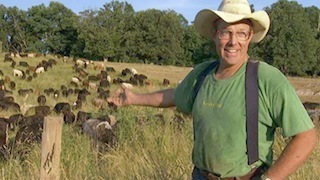
I’m grateful to have our friend David Maren of Tendergrass Farms back to pen today’s guest post. This is the last post in a three part series on the assertions that retailers make about the way their poultry, pork, and beef is raised. And don’t miss the free grass fed steak coupon code that he’s generously provided at the end of the post!
This is the third and final post in my series about animal production claims. In the previous two posts I’ve endeavored to expose some of the confusing and deceptive claims that marketers make about the way that their chickens, turkeys, and pigs are raised. Today my goal is to help you better understand the options you’re presented with when you want to purchase beef. In a previous post, Mark gave an overview of the differences between grass fed and grain fed beef where he touched on everything from taste to nutritional profiles and even pricing and availability. This post has a much narrower goal of helping you figure out what exactly you’re being offered, whether it claims to be grass fed, grain fed, pasture raised, free range, all natural, or organic. Mark’s verdict in his post was that while you need to be eating lots of good beef, grass fed beef isn’t always going to be available or affordable for everyone. This post will help you understand the whole spectrum of beef options that you have to choose from whether or not grass fed is what you’re going for.
Bovine American History and Conventional Beef
Before World War II virtually all beef in this country was raised from birth to slaughter on pasture where 100% of their nutrients came from forage: grass, clover, and other green leafy plants. Generally speaking, cows were born, weaned, grazed, and finished all on the same farm. However, starting in the late 1940’s, the model of beef production started to shift dramatically toward feedlots. The primary factors that lead to this change were an increasing consumer demand for well-marbled beef that is more easily produced with grain feeding than grass, low grain prices, and the advent of penicillin which made it possible to keep vast numbers of cows in one place without rampant disease.1
As a result of this trend, today’s conventional grain-finished beef industry produces the vast majority of beef on the market. The conventional beef industry is divided into two sectors: cow-calf operations and feeding operations. Nearly all cows that end up in feedlots originally came from pastures. Cow-calf farms, often located in areas where the land cannot easily be used for row crops, usually keep herds of 40 to 100 or more female cows that give birth to calves that are weaned and sold at regional buying stations. The number of months that these animals spend on pasture with their mothers depends a lot on the local geography, climate, and season. The buying stations put together tractor-trailer loads of these feeder calves and ship them to the Great Plains where corn and soybeans are cheap and feedlots are plentiful. The number of months that these cattle are fed grain in feedlots varies from about 4 to 12 months. In addition to genetically modified corn and soy, feedlot rations are often comprised of cheaper ingredients including everything from urea to candy (ground up with the wrappers and all). Unless you see labeling claims or other point of sale claims (website claims, etc.) stating otherwise, it is safe to assume that you are being offered conventional feedlot-finished beef.
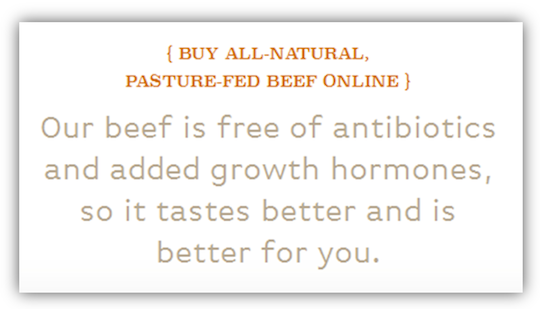
An example of all-natural, pasture-fed, antibiotic free, and growth hormone free claims. This is from the McAllen Ranch Beef site.
All Natural, Pasture-Fed
The first time I came across McAllen Ranch Beef was in a sponsored Google search result. At the time, McAllen Ranch was paying Google to display an ad for their website whenever a person googled “grass fed beef.” Out of curiosity, I clicked through to their website to see what they had to offer. I noticed almost immediately that on their website itself, the term “grass fed” had been replaced with terms like all-natural, pasture-fed, antibiotic free, and growth hormone free. That was the first red flag. The second was the fact that the company was based just north of the Mexican border in south Texas, an area where there is very little grass to speak of. When I gave them a call they admitted that in fact the vast majority of their beef was technically not grass fed because their cows were fed grain. As with so many of the other examples of marketing that we’ve looked at so far in the previous two posts, it appears to me that McAllen Ranch is not actually lying on their website. Let’s take a look at their claims one by one.
As we covered in detail in the pork production claims post, “all-natural” doesn’t necessarily refer to the way that the animal was raised. As with dry aged beef, “all-natural” refers to the way that the meat is handled postmortem. As long as it is free from added color, artificial flavors, or synthetic substances it can be called “all-natural” no matter how it was raised. This means that a huge percentage of the all-natural beef on the market today is raised in feedlots with GMO-feed, artificial hormones, and antibiotics. For example, after writing the last post on pork claims I had a phone conversation with Bill Niman, founder of Niman Ranch, who shared with me his disgust regarding the fact that Niman Ranch now buys all of their all natural beef directly from feedlots.
McAllen Ranch beef is also “pasture-fed.” This might be the trickiest claim of all. When most people hear “pasture-fed” they think “grass-fed” but there’s a very important distinction between these two terms. Pasture-fed, pastured, or pasture raised are all synonymous terms that mean that the animal was raised in a pasture of some form but it doesn’t necessarily mean that the animal exclusively ate grass while on pasture. In many areas of the world such as south Texas, grass is scarce and grain feeding is the only viable way to get cows to grow up to a good weight for slaughter quickly. By using the term “pasture-raised,” McAllen Ranch can raise their cows with large amounts of grain and very small amounts of forage without technically breaking the law as they would be doing if they called their beef “grass fed.” While not commonly used in the beef industry, the claim “free range” means virtually the same thing.
Antibiotic Free, Artificial Growth Hormone Free
In contrast, the terms “antibiotic free” and “hormone free” are actually very meaningful. While McAllen Ranch beef may not be grass fed, the fact that it is raised without the use of artificial hormone implants and subtherapeutic antibiotics is significant. This is because today almost all beef in the US is raised with the use both of those substances. Subtherapeutic antibiotics are used in beef production much as I described in the articles on pork and poultry. Instead of being used as a therapy for a specific veterinary diagnosis, subtherapeutic antibiotics are added to a cow’s daily ration to maximize its “performance” when packed into feedlots with tens of thousands of other potentially sick cows.
Similarly, conventionally raised feedlot beef is usually implanted with a pellet containing either estrogen or androgen hormones to maximize their growth. Note that in the US this is only legal in lamb and beef production. The pellet is typically implanted under the skin in the ear of the animal being that the ear doesn’t typically enter the food supply. As you can imagine, cows that are given artificial hormone implants grow much faster than artificial hormone free cows. Nearly all beef in the US is raised with both artificial hormones and subtherapeutic antibiotics.
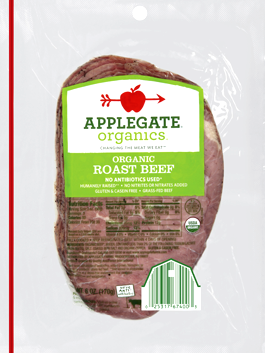
A package of Applegate brand certified organic roast beef.
Certified Organic Beef
Certified Organic Beef production is regulated by the USDA National Organic Program (NOP). The NOP protocols that pertain to certified organic ruminants (animals that chew their cud such as cows and sheep) state that the animals must be raised on “pasture [with] daily grazing throughout the grazing season(s).”2 At this point it would appear that the organic regulation would require certified organic beef to be raised with the same standards as “pasture-fed” beef with the added requirement of only certified organic feed being used. There is, however, a loophole in the regulation that states that “yards, feeding pads, or feedlots” may be used for “ruminant slaughter stock” as long as the feedlot feeding period does not exceed 120 days (or 1/5 of the animal’s total life). Keep in mind that many conventional non-organic feedlots don’t keep their animals on the feedlot for more than 120 days either. It would be impractical for me to list every NOP requirement for certified organic beef in this post but it is important to point out that they do not allow the use of artificial hormones or antibiotics.3
The fact that a certain beef product is certified organic does not necessarily mean that it is not also grass fed. The Applegate product pictured above is not made from grass fed beef, but Applegate does have at least one certified organic grass fed beef product that I’m aware of. Another example of a company that offers certified organic grass fed beef is TX Bar Organics. Just remember that it isn’t safe to assume that all certified organic beef is 100% grass fed.
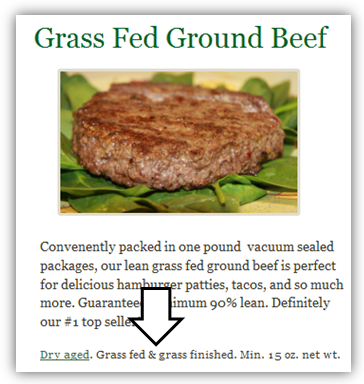
A product claiming to be “grass fed” as well as “grass finished.” This screenshot is from the Tendergrass Farms website.
Grass Fed, Grass Finished
The USDA standard for grass fed beef requires that grass and forage be the food source for grass fed cows for the entirety of the animal’s life. The standard does allow, of course, for grass fed calves to drink their mother’s milk but they cannot be fed grain and must have “continuous access to pasture during the growing season.” Stockpiled forage such as hay is acceptable and used widely in grass fed beef production, typically just in the winter. Notice that because the term “grass fed” can only be used when the animal is fed forage for the entirety of the animal’s life, the term “grass finished” doesn’t actually add any meaning when used in conjunction with “grass fed.” Here at Tendergrass Farms we originally didn’t use the term “grass finished” but we started getting so many phone calls from customers asking if our beef was grass fed and grass finished that we decided to use that language on our website to help clarify the issue. Many other grass fed beef farms and organizations use the same language to describe their 100% grass fed beef.
The USDA defines forage as “grass (annual and perennial), forbs (e.g., legumes, Brassica), browse, or cereal grain crops in the vegetative (pre-grain) state.” Legumes are plants from the bean family such as alfalfa or clover and brassicas are plants from the cabbage family such as rape. Note that cereal grain crops such as rye are allowed for use as forage for grass fed beef as long as the cows eat the rye shoots before they form grain heads. Out of all of these legally acceptable options, perennial grasses and clovers are by far the most commonly used. They require the least work to grow and are easily stored for winter as hay. The alternatives such as brassicas and annual grasses often provide more nutrient-dense forage which enables cows to grow more quickly, but the labor costs involved with planting and feeding annuals is very high compared with perennials so this method is less common.
One of the problems with the USDA definition for grass fed beef is that it has a loophole that allows for the use of grain “to ensure the animal’s well being at all times during adverse environmental or physical conditions.” One local grass fed beef company here in Virginia once disclosed to me that they have an internal policy with regard to this loophole that allows their farmers to feed up to 2% of the animal’s weight in grain per day during the winter months. Assuming that their cows weigh about 1000 pounds and given the fact that there are about 5 “winter months” in this part of the country, their policy would allow for each grass fed cow to be fed about 1.5 tons of grain per year. Amazingly, it can still be marketed as “grass fed beef.” As absurd as this idea might sound to the farmers here at Tendergrass and many other reputable grass fed beef organizations, this practice is not uncommon. As always, there’s no good alternative to doing your homework, asking your farmer exactly how their animals are raised, and tracking down for yourself the real story behind the label.
So where do we go from here?
Throughout this series of posts I’ve hammered the idea of not making assumptions about your meat sources and I’ve encouraged you to hold your suppliers accountable. The best way to do this is to take the time to get to know your suppliers. Call them up. Email them. Read the fine print on their websites. Ask the hard questions. Today, the internet makes this a lot easier than it was years ago. You might be surprised at what you find out. Here at Tendergrass we have an entire page called Grass Fed Standards where we tell you just how our meats are raised and most other companies that are honest will have similar materials readily available. Generally speaking, the more closely connected you can be to the farmer who raised your meat, the better. Just because the grass fed beef you’re offered might be raised in New Zealand or Australia (like the Applegate product above) doesn’t mean that it was necessarily raised according to low production standards, but it’s often nearly impossible to hold your farmer accountable when you (and your retailer) don’t even know who they are.
Go against the grain, get 5 free grass fed beef steaks
For those of you who think that grass fed beef sounds like the best option of all we’ve created a coupon code that’ll give you five (5) free 1/2 pound dry aged grass fed sirloin tip steaks (a $79.95 value) with all orders over $199 which will also qualify your order for Free Shipping. Just head over to the Tendergrass Farms online grass fed meats store and toss $199 of our yummy grass fed beef, pastured pork, pastured chicken, or pastured turkey into your cart. When you’re ready to check out just apply the coupon code GO-AGAINST-THE-GRAIN and five grass fed sirloin tip steaks will be miraculously added to your cart at a price of $0.00 (expires 9/30/13, limited to 50 redemptions, while supplies last).
Tip: If $199 sounds like a big first order just grab a couple friends from the gym and place an order together.
References
1There’s a great summary of the history of beef production in the USA over at LivingHistoryFarm.org
2You can read the full NOP regulations in the Electronic Code of Federal Regulations (ECFR).
3The Illinois State Bar Association has a great little summary of the legal side of this.
David Maren is a husband, father, farmer, and co-founder of Tendergrass Farms. Tendergrass Farms is a cooperative-style online grass fed meats shop that exists as a bridge between the often geographically isolated family farmer and committed grass fed meats enthusiasts like yourself. The Tendergrass Farms vision is to sustain family farms through making it easy for you to purchase their meats by taking advantage of appropriate technology and ultra-efficient transportation models that enable their meats to be shipped to fans all around the USA.
If you’re not already a huge fan of Tendergrass Farms, you’re missing out: Go bookmark their site , like their Facebook page , follow them on Twitter , and check out their grass fed blog!

July 1, 2013
Dear Mark: Bee Products, Unable to Squat After Knee Injury
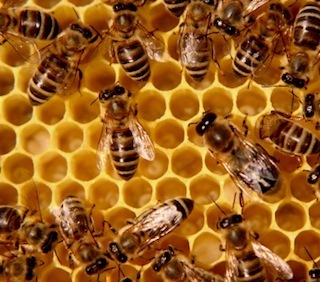 For this week’s edition of Dear Mark, we’ve got a two-parter (although the first question has several parts to it). First up is a question about bee products and their effects (or non-effects) on human health. Are they miracle supplements? Are they all hype? Or is the truth somewhere in between? Find out below. Then, I try to help out Dan, a guy with a bum knee who, before injuring himself, based his entire workout routine around the back squat – which he can no longer perform safely. He wants to figure out a way to work out his lower body without the almighty squat at his disposal. Luckily, there are ways, which I’ll discuss below.
For this week’s edition of Dear Mark, we’ve got a two-parter (although the first question has several parts to it). First up is a question about bee products and their effects (or non-effects) on human health. Are they miracle supplements? Are they all hype? Or is the truth somewhere in between? Find out below. Then, I try to help out Dan, a guy with a bum knee who, before injuring himself, based his entire workout routine around the back squat – which he can no longer perform safely. He wants to figure out a way to work out his lower body without the almighty squat at his disposal. Luckily, there are ways, which I’ll discuss below.
Let’s go.
Hey Mark,
I wanted to get your opinion on all the various bee products out there like pollen, royal jelly, propolis, honeycomb, etc. You did a post on honey already, but what about the other stuff? Is it worth looking into? There’s a lot of hype surrounding them and I know you can get to the bottom of it. Thanks!
Kim
Let’s start with pollen. Bee pollen is just what it sounds like: the plant pollen picked up by hairy bee legs in the course of their travels, mixed with regurgitated honey and nectar and enzymes and microbes, and rolled into a little ball. These little balls, packed with protein, B-vitamins, sugar, fatty acids, minerals, and other components that won’t show up on FitDay, serve as food for the hive’s inhabitants. No two pollen balls are alike, of course, so it’s impossible to say with any shred of confidence that “bee pollen contains this, this, that, that, and those in these specific amounts.” Bee pollen is a diverse mix of nutrients. Sounds interesting, for sure, but does it do anything?
Well, if you’re allergic to pollen, like millions of people with hay fever are, taking bee pollen could induce allergic reactions in you. Several studies suggest this, including one in allergic children and one in a single person taking a pollen supplement. I doubt it’s as grave a public danger as some would suggest, but that doesn’t mean it’s not a possibility worth consideration. I was unable to find any study showing that bee pollen supplements can have the opposite effect and ameliorate pollen allergy symptoms.
Another common claim for pollen is that it improves athletic performance, acting as an ergogenic aid. This review summarizes the evidence of that claim:
One study found that bee pollen increased the work capacities of weight lifters, although the increase was not statistically significant.
Another study found that college swimmers derived no benefit from pollen. Neither hemoglobin, red blood cells, nor overall performance were affected by bee pollen supplementation in any direction.
In cross country runners, bee pollen had no effect on performance, blood potassium levels, or hemoglobin.
There’s very little, if any, evidence for this claim.
That said, bee pollen does seem to be an interesting blend of antioxidant compounds. It’s basically a melange of plant residue, of phytonutrients and polyphenols and flavanoids from all across the land. Like most other plant phytonutrients, I could see it having some beneficial physiological effects that simply have yet to be catalogued. There’s already limited evidence that certain components of bee pollen are helpful against prostate cancer.
Onto royal jelly. If bee pollen is the meat-and-potatoes of the hive, royal jelly is the colostrum. It’s what baby bees eat in order to grow big and (relatively) strong, and it seems far more promising than bee pollen, with some very interesting properties.
For one, it contains primarily medium chain fatty acids, which some researchers think are responsible for the health effects of royal jelly. One in particular, 10-Hydroxy-trans-2-decenoic acid, has been shown to modulate the immune system, protect human skin against UVA damage, prevent endotoxin-induced inflammation, prevent the ability of cavity-producing bacteria to adhere to tooth surfaces, and increase collagen production. All that said, most of these studies were done in vitro, rather than live humans or animals, so take the results with a grain of salt.
In mice, oral doses of royal jelly increase expression of a neurotrophic factor. In other words, eating royal jelly may improve brain function. There are lots of anecdotes on health and supplement forums from people who report improved cognition after taking royal jelly for awhile. But you know what they say about anecdotes.
I’d say it might be worth trying if you can get a good deal. Royal jelly tends to be fairly expensive.
Honeycomb is the real deal. It’s a complete food, especially if you take it like the Hadza take their honeycomb: with vast numbers of bee larvae still attached. It’s packed with minerals, protein, B vitamins, antioxidants, fatty acids, and, yes, sugar, but a whole foods version of sugar with a very different metabolic effect. If you can get your hands on real honeycomb teeming with larvae, go for it!
Propolis is the glue that holds the honeycomb together. It’s a resinous mixture gathered from various plant and tree saps that plugs any unwanted entrances to the hive, provides structure, prevents diseases and parasites from entering, inhibits microbial infections, and reduces vibration. Propolis is also one of the richest sources of polyphenols, presumably because it’s basically an extract of dozens of plant essences. This one seems to have some merit.
There appear to be great potential benefits if in vitro studies pan out in humans, and the phytonutrient profile of bee products is quite broad and varied, but overall I’d say the evidence is inconclusive.
Dear Mark,
Recently, I tore the meniscus in my left knee. I’d previously been really into barbell lifting, particularly the squat. Basically, my whole workout regimen revolved around being able to squat. I had surgery, but I’m still not really ready to get back under the bar. Now I never feel like I’ve gotten a good workout. How do I keep from going crazy and is there a way to replace the squat?
Help!
Thanks,
Dan
Ha, if there’s one downside to the Internet’s obsession with the back squat, it’s that people feel they’re wasting their time in the gym if they don’t – or can’t – squat. That’s ridiculous. The squat is an incredible exercise, don’t get me wrong, but its absence does not necessarily nullify the effectiveness of a workout regimen. There are lots of things you can do to get a really strong lower body that don’t involve placing a bar across your back.
So, first of all, try to relax. You can still get a great workout.
Cycling sprints
Get a bike, sit astride it, and then pedal really really hard for a little while. Rest, repeat. There’s no other form of “cardio” with the cycling sprint’s potential toward leg hypertrophy and strength development (unless you’re doing something like lifting weights faster). If you don’t believe me, get a load of these. Yeah, yeah, those guys also do squats and stuff, but all that cycling plays the biggest role. Very few of my old endurance buddies would ever be called “muscular,” but the cyclists all had well-defined, sizable legs that dwarfed the rest of their bodies (without ever sniffing a squat rack).
Ideally, you’d do this on an actual mobile bike, but a stationary bike works too.
In my experience, the hardest bike sprints take place on slight inclines. You don’t want it so steep that you’re chugging along, barely able to pedal. You want it to be subtle, almost so subtle that you can’t even tell it’s uphill until you start pedaling.
Slightly stand in your seat. Life your butt about an inch off the seat when you pedal. This seems to really put the focus on your thighs.
Don’t just “push” with your quads. Actively “pull” with your hamstrings, and don’t forget about your glutes. After a session of proper cycling sprints, your entire lower body should be fried.
Play around with gears until you find the right one for you. You want a nice balance of speed and effort, so that you can go really fast against a fairly high level of resistance.
For strength gains, fully recover in between sprints. For hypertrophy, shoot for a bit less rest.
Single leg work
Some people with knee injuries who can’t squat find they can do lunges, step-ups, or Bulgarian split squats without any pain. And some are the opposite: they can squat, but single leg work kills their knee. The reason for this probably comes down to how you squat, how the weight is distributed across your tissues, as well as the nature of your specific injury. One advantage of single leg work that might affect knee pain? It’s way easier to keep your torso upright during a lunge, step-up, or split squat.
Leg press
Before I’m consumed by a cloud of waxy maize, whey protein hydrolysate, and creatine given life by the raw anger of the Internet strength training community, allow me to explain myself. The leg press requires a machine, yeah. It’s not a squat, sure. You miss out on the upper body involvement, okay. But it’s a compound movement nonetheless. You’re using the entirety of your lower body to press a heavy weight. It may be inferior to the squat in terms of athletic and strength development, but it’s no slouch – and it’s a lot harder to mess up.
Don’t neglect the posterior chain
Knee injuries often limit knee flexion exercises like the squat while leaving the ability to perform hip extension exercises like deadlifts relatively untouched. So do them. Romanian deadlifts, kettlebell swings, traditional deadlifts, single leg deadlifts, whatever you prefer. If you can’t squat, your posterior chain – the glutes and the hamstrings – still require your attention. Plus, simply working your legs with a relatively heavy load without stressing the injured joint will help that joint get back to health, just from the movement and gentle stimulus.
That said, I would suggest that you try to maintain squat mobility throughout all this. Practice your Grok squat, as long as it doesn’t hurt your knee. You don’t have to add weight (just yet or ever), but you should be able to squat comfortably. It’s a good goal. Make sure you’re not just squatting wrong before you write yourself off.
That’s it for today, guys. Keep the questions coming and thanks for reading!
Limited Time Offer: Get a FREE Copy of The Primal Connection When You Order the Primal Fuel Chocolate Coconut or Vanilla Coconut Creme on Autoship>>

June 30, 2013
Weekend Link Love
 The Primal Blueprint Recipe page here on Mark’s Daily Apple has had a makeover. Recipe category sorting is coming soon, so you can search for recipes by ingredients and meal types. Bon appetit!
The Primal Blueprint Recipe page here on Mark’s Daily Apple has had a makeover. Recipe category sorting is coming soon, so you can search for recipes by ingredients and meal types. Bon appetit!
Many thanks to everyone the joined the conversation in recent weeks around the idea of a Primal Blueprint movie. You feedback has been incredibly helpful. You’ve given me and my team a lot to think about! Here’s the latest news on the movie. Stay tuned for updates.
Research of the Week
Among older adults, higher levels of urinary polyphenols (a direct measure of polyphenol intake and an indirect measure of fruit and vegetable intake) are associated with lower mortality.
Why men over 40 should probably reconsider their desire to run triathlons. I’m just glad I got out when I did.
Around two million years ago, the development of the unique elastic energy storage unit known as the human shoulder allowed the accurate and powerful throwing of projectile weapons and coincided with the intensification of hunting. But no, I’m sure we were just using our throwing ability to spear errant grass seeds and out-of-reach tree fruit.
Interesting Blog Posts
Balance training isn’t just for fun and looking cool. It can actually improve your ability to generate power, move quickly, and lift heavy.
Does caffeine cramp creativity?
Media, Schmedia
Sadly, Argentina is no longer the king of beef. Pasture-based ranch land is being replaced with soybean sprawl and grass-fed burgers are being replaced with “patties made from yamani rice and adzuki beans.” What a damn shame.
Nope, fast food still isn’t good for you: a good response to last week’s Atlantic piece condemning those who promote full-fat “real food.”
Paleo’s latest converts? Top endurance athletes, believe it or not (I didn’t always).
Minimalist shoes are starting to infiltrate sports other than running, like tennis, football, and even basketball. I give it five years before point guards are breaking (defenders’) ankles in zero-drop shoes.
Everything Else
An interesting photography trend from the 1800′s.
Steve Cooksey, the paleo blogger threatened with legal action for “dispensing unlicensed health advice,” was just given the go-ahead on his First Amendment lawsuit. This reverses a previous ruling that had dismissed Cooksey’s case. Fantastic!
Go check out Peter Attia’s extremely touching TED talk.
“If, on the other hand, there is more to obesity than simple thermodynamics, some of the billions spent on individual-centred policies and products may be being wasted. Time, in that case, to try some alternative policies based on alternative theories, and see how they fare.” If increased caloric intake (even just a couple dozen calories over “maintenance”) is the only reason anyone gains weight, David Berreby wonders why everyone and everything – humans who count calories, pets eating the same scoop of kibble every day, lab animals with carefully curated diets – are getting fatter and fatter with no end in sight.
Recipe Corner
Zero effort pork belly that tastes like you fussed over it all day long.
Beef sofrito over zoodles. I don’t actually even care how good this one tastes. I just like that they call zucchini noodles “zoodles.”
Time Capsule
One year ago (Jun 30 – July 6)
What Does It Mean to Be Fat-Adapted? – What’s it like to be adapted to burning fat? What does it feel like?
Primal Road Trip: Tips and Tricks for Staying Healthy While Traveling – This guest post from Nerd Fitness explains how to take a Primal road trip.
Comment of the Week
To be fair, the article didn’t specify whether the car was made of bacon.
-That’s true, Dan. The presence of a car made of bacon can justify a whole lot of otherwise egregious, unpardonable offenses.
Limited Time Offer: Get a FREE Copy of The Primal Connection When You Order the Primal Fuel Chocolate Coconut or Vanilla Coconut Creme on Autoship>>

June 29, 2013
Mini Breakfast Meatloaves
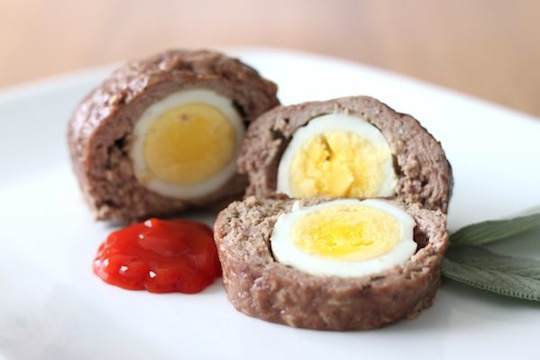 It’s true; these amazing egg-stuffed mini meatloaves aren’t only for breakfast. They’re great for lunch or dinner, too. But when served in the morning (with a side of bacon, if you have it) they really start the day off right.
It’s true; these amazing egg-stuffed mini meatloaves aren’t only for breakfast. They’re great for lunch or dinner, too. But when served in the morning (with a side of bacon, if you have it) they really start the day off right.
First, a mixture of pork and beef is seasoned to taste like breakfast sausage. Next, it only takes a minute to form the meat around a hardboiled egg. When baked together, the meat and egg turn into a rather stunning little loaf.
Cook these mini breakfast meatloaves on a lazy weekend morning, or better yet, on Sunday night so they’re waiting in the refrigerator Monday morning. Eat them cold or give the cooked loaves a quick zap in the microwave. Now that’s a way to start a week.
Servings: 4
Time in the Kitchen: 1 hour, 15 minutes (includes hard boiling the eggs)
Ingredients:

4 hardboiled eggs, peeled
2 tablespoons olive oil (30 ml)
1 small yellow onion, finely chopped
1/2 pound ground beef
1 pound ground pork
1 tablespoon finely chopped fresh sage leaves (15 ml)
2 tablespoons fresh thyme leaves (30 ml)
2 teaspoons fennel seeds (10 ml)
1/4 teaspoon ground nutmeg (a pinch)
1/4 teaspoon ground allspice (a pinch)
1/2 teaspoon black pepper (a pinch)
1 teaspoon salt (5 ml)
1 raw egg
Instructions:
Recipe Tip: To hard boil the eggs, completely cover the eggs with cold water in a deep pot and bring the water to a boil. As soon as the water begins to boil, turn off the heat and put a lid on the pot. Let the eggs sit for 12 minutes, then drain. Put the eggs in a bowl of cold water to cool down before peeling.
Preheat oven to 325 ºF (163 ºC).
In a skillet, heat the olive oil over medium. Add the onion and sauté until soft.
In a large bowl combine the onion with the ground meat, sage, thyme, fennel seeds, nutmeg, allspice, black pepper, salt and raw egg. Mix well with your hands.
Separate the meat into 4 even portions. Roll each portion into a ball then flatten the meat into a large thin patty. Set a hardboiled egg in the middle and fold the meat over the egg and shape it with your hands until the egg is completely hidden. The meat should be shaped like a tiny oval meatloaf.
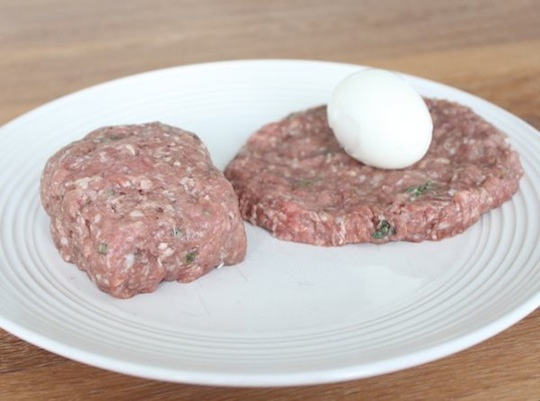
In a rimmed baking pan, bake the meatloaves uncovered for 35 minutes, or until the temperature in the middle is at least 165 ºF.
Remove from the oven and let the meatloaves rest for 10 minutes before slicing. Serve with Primal ketchup and if you like, bacon on the side.
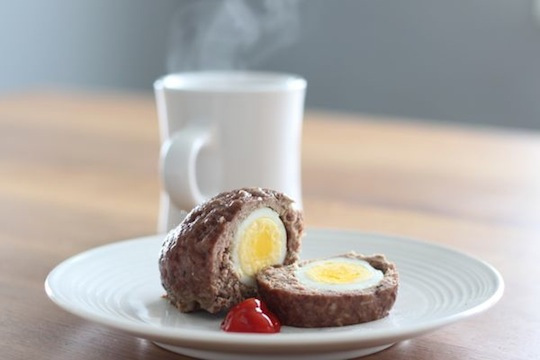
Not Sure What to Eat? Get the Primal Blueprint Meal Plan for Shopping Lists and Recipes Delivered Directly to Your Inbox Each Week

June 28, 2013
The Primal Lifestyle Has Been a Game Changer
It’s Friday, everyone! And that means another Primal Blueprint Real Life Story from a Mark’s Daily Apple reader. If you have your own success story and would like to share it with me and the Mark’s Daily Apple community please contact me here. I’ll continue to publish these each Friday as long as they keep coming in. Thank you for reading!
 I feel compelled to give back to your organization (Primal Blueprint/Mark’s Daily Apple) as it has it has a profound impact on my life. I hope my story will motivate others to consider taking the steps to lead to a longer and more fulfilling life.
I feel compelled to give back to your organization (Primal Blueprint/Mark’s Daily Apple) as it has it has a profound impact on my life. I hope my story will motivate others to consider taking the steps to lead to a longer and more fulfilling life.
Like many others, a slow deterioration of my health led me to seek out a sustainable approach to a healthier life. My goal was not just to be alive at 85…it was to thrive and enjoy an active life.
I never would have imagined that I would be dealing with health/weight issues as I was cruising through life counterbalancing poor eating habits with an active lifestyle that included long distance running (40-50 miles/week, marathon races, etc.) for 20+ years.
When I hit my late twenties, my weight started to creep up given my increasingly sedentary lifestyle. That’s when I started to practice crash conventional diets to bring my weight down. The funny thing was that I never had a problem losing the weight as I am a focused, goal oriented person. I would psych my mind up to put my body into deprivation mode for 2 months and the pounds would come off quickly. Unfortunately, I would hit my goal and then return back to the toxic eating habits and the weight would come back stronger than it came off.
I turned 52 last year and had undergone one too many yo-yo diet experiences based upon many of the conventional dieting techniques. My weight loss/gain swings started at 20 pounds and soon got to 40 pounds. This occurred at least 7 times over a 15 year period. As a result of my weight management issues, I slowly developed “middle age health issues” such as gastric reflux, sleep apnea and other GI disorders. These disorders were treated mostly through prescription drugs. After going to a GI doctor, and hearing that I was at risk of losing my gall bladder, I was shocked into reality. I wasn’t ready to enter a phase in my life where I would slowly lose functionality of my body and increase my dependence on prescription drugs to slow down my body’s deterioration. This would not get me to my “Thrive at 85” goal.
At the same time, my skeletal structure was showing wear and tear from the years of pounding it endured through long distance running. I thought I was in great shape being a marathon runner but I realized I was totally out of balance with very low core strength. I develop chronic issues with my back and knees that resulted in “outages” that immobilized me for periods of time. These outages made me miserable as I couldn’t do the things I enjoyed.
After the gall bladder incident, my wife had encouraged me to read materials on the Paleo Lifestyle. After reading The Primal Blueprint and subscribing to Mark’s Daily Apple, it became so clear that the approach I was taking to managing my health (yo-yo dieting and cardio obsession) didn’t make any sense. I realized that my body was not intended to eat the foods I was eating or to endure the pounding it was taking. The logic in the blueprint and the daily articles made sense and inspired not only me…but my wife as well.
The only question was whether I would be able to make the huge transformation in eating habits. The staple of my diet was based mostly on grains and I would get this maddening sweet craving after dinner that was usually satisfied with junk desserts. The change appeared intimidating at first. I was shocked how easy it was, after just 2 weeks, to get a great feeling of satisfaction from eating healthy, high fat foods. I lost 50 pounds during the first 7 months of Primal and, most importantly, my weight has been stable for almost a year!
I also have been getting into lifting weights and core strengthening for the first time in my life. I have not had an outage in over 1 1/2 years and feel a lot stronger.
But…there are so many other more impactful benefits that come from the Primal lifestyle, including having much more energy, being able to handle stress and having fewer mood swings.
The key was that my wife and I took the journey together. We never turned back. I transformed from a stressed out, carb loving, and cardio extremist into someone who truly enjoys all aspects of the Primal lifestyle (diet, exercise, sleep, etc.). It has been a game changer for us. Besides the weight management, we have loved the wonderful feeling of well-being that we experience now. In addition, taking this Primal journey together has really strengthened our marriage. The success stories and articles we have read on Mark’s Daily Apple have been an inspiration to my wife and I, and I felt compelled to give back to the Primal community and the people who may be considering it.
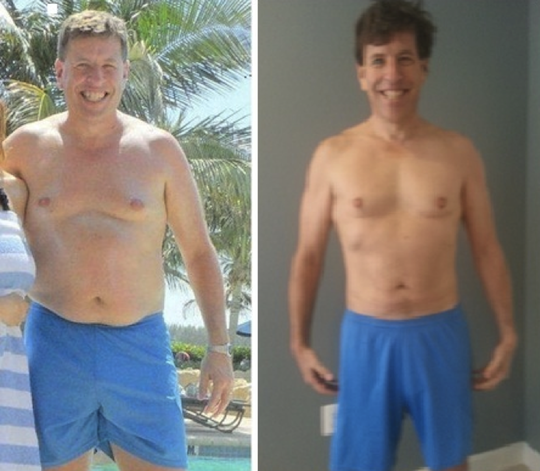
Dave D.
Gaithersburg, Maryland
Limited Time Offer: Get a FREE Copy of The Primal Connection When You Order the Primal Fuel Chocolate Coconut or Vanilla Coconut Creme on Autoship>>

June 27, 2013
The Uses and Abuses of Guilt
 I’ve got guilt on the mind today – not my own (that I know of) but the concept, the power, the influence that seems to fuel and complicate so much of our lives, our health journeys notwithstanding. How many of us have felt led by guilt – for better or for worse – as we tried to lose weight and/or tried to live a healthy life? Although we tend to view guilt as a negative emotion, has it added something positive or facilitated our success? What are the contexts guilt takes on in our efforts toward health? What are the narratives we assign to the feeling, and are they bound up in other, less effective influences?
I’ve got guilt on the mind today – not my own (that I know of) but the concept, the power, the influence that seems to fuel and complicate so much of our lives, our health journeys notwithstanding. How many of us have felt led by guilt – for better or for worse – as we tried to lose weight and/or tried to live a healthy life? Although we tend to view guilt as a negative emotion, has it added something positive or facilitated our success? What are the contexts guilt takes on in our efforts toward health? What are the narratives we assign to the feeling, and are they bound up in other, less effective influences?
At its best, guilt can hold us accountable. It can reinforce certain limits or standards of ethical conduct. We might be tempted toward some moral infraction but avoid actually following through because we know we’d feel miserable about it later. The guilt would by far outweigh any benefit or rush we might enjoy from the immediate gratification.
Some people can be motivated by genuine guilt in healthy ways. (Others not so much. I think knowing yourself matters here.) Those who benefit from guilt are those who put it in a context beyond themselves. They choose to quit smoking because they feel guilty about the prospect of dying an early death and missing their children’s or grandchildren’s lives. They exercise because they feel guilty letting down a fitness team at work or their running partner. They eat better because they feel guilty making their families deal with the physical lethargy and emotional instability they feel when they don’t. When we channel guilt in these contexts, it’s like we’re breaking a kind of inherent contractual agreement, falling down on our jobs, not honoring our commitments.
At its worst, however, guilt can hold us hostage. Without the proper checks and balances, it can take over our lives. I’ve met people who are held in place – unhealthy, unproductive places – by guilt. They run themselves into the ground with insane schedules because they feel guilty saying “no” to any commitment. They shrivel emotionally, socially or even physically because they feel guilty taking time away from their families and/or jobs to practice necessary, deserved self-care. They obsess over food choices, sucked into anxiety over eating the exact right thing and only the exact right thing that meets a host of standards covering everything from health to locality to farming practices to packaging, etc.. They drive themselves nonstop because they feel guilty if they don’t live up to a certain standard of fitness/appearance/health.
As far as the research goes, studies show that guilt doesn’t do us many favors in our health endeavors. Dieters, for example, experience guilt when eating foods that go against their goals, but the attempted but failed restraint and related guilt doesn’t keep them from making bad choices. The evidence suggests even, as we might intuitively guess, that eating something “forbidden” tastes all the sweeter. The guilt in this way is a lure in itself. There’s something in our natures that seeks out the transgressive. In other words, we might be better off diffusing the power of guilt itself and sidestepping its influence altogether whenever and wherever possible in our health decisions.
I wonder how often we use the word “guilt” when we actually mean shame, which is a very different concept – and much more undermining and self-defeating than plain old situational guilt ever is. When we feel guilty not pushing ourselves to the wall with every workout or making a good enough choice for a last minute dinner, it’s time to stop and ask ourselves who/what is on the other side of the guilt. Who’s imposing it? Is it society’s message? Is it a voice from our childhood, from someone in our life today? Is it our own perfectionistic tendencies at work? How much is this voice representative of reality – or, alternatively, some agenda that has nothing to do with us let alone our health? Finally, the more we succumb to guilt ourselves, the more we assign it to others. When we feed guilt – give power to it – there’s almost no end to its reach.
Because guilt seems to be hardwired into us, it’s bound to pop up now and then, but we don’t have to get dragged into its emotional cascade. When we feel guilt creep up about a skipped workout or a “20” kind of choice in the 80/20 framework, we can note the feeling, even lean into it, examine it, and then move on. Imagine not resisting the feeling but not identifying with it either. I think our emotions can offer telling messages to us, but we can’t hear these when we’re bound up in the emotions themselves. Instead of letting them get ahold of us, we can hold them in our mind’s eye for whatever consideration we want to offer them. Analyze the guilt for what it has to say about a particular choice, but then own your decision (and freely accept whatever benefits and drawbacks come from it).
Thanks for reading today, everyone. What are your thoughts on the role guilt can/should/does play in a healthy life? Are you motivated by guilt, or have you given up guilt?
Limited Time Offer: Get a FREE Copy of The Primal Connection When You Order the Primal Fuel Chocolate Coconut or Vanilla Coconut Creme on Autoship>>

June 26, 2013
Is Obesity a Disease?
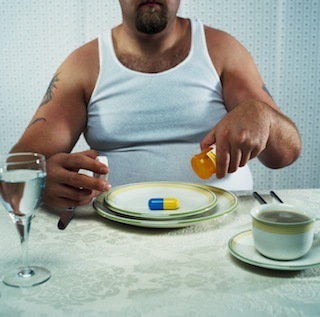 You’ve probably heard that the American Medical Association recently classified obesity as an official disease. I’m still mulling the whole deal over, and I’m not quite sure what to think about the decision. First, what exactly is a disease?
You’ve probably heard that the American Medical Association recently classified obesity as an official disease. I’m still mulling the whole deal over, and I’m not quite sure what to think about the decision. First, what exactly is a disease?
A disease is defined thusly:
A disorder of structure or function in a human, animal, or plant, esp. one that produces specific signs or symptoms or that affects a specific location and is not simply a direct result of physical injury.
A particular quality, habit, or disposition regarded as adversely affecting a person or group of people.
By those literal definitions, obesity could be considered a disease. It’s caused or characterized by disordered diets, disordered hormonal responses to food, and disordered energy intake/absorption/expenditure ratios. Furthermore, obesity can lead to other, worse diseases, like heart disease, diabetes, and cancer. It’s also a “quality” (a preponderance of body fat) that adversely affects a person (increases the risk of other metabolic diseases, increases impact on joints, impairs physical ability, etc.).
But I’m not sure if obesity is actually a disease in the sense that most people imagine it, nor am I sure it should be called that. When people hear words, they don’t consult the dictionary to determine their meaning and mount a response. Unless it’s for language class, they care not for denotations, but rather connotations - commonly held cultural or emotional responses to words or phrases. This tendency of ours is not by choice. It’s simply how language works in the real, immediate world made up of actual thinking, feeling humans. So, what are a few connotations aroused by the word “disease” and how might they affect an obese person’s response to such a “diagnosis”?
Diseases are:
Immutable – A disease “stays with you.” Everyone knows that. It’s here to stay, and nothing’s going to change that unless you’re talking some serious pharmaceuticals or surgical interventions. You, a layperson, couldn’t hope to get over a disease all by yourself. Why try?
Deadly – You get over sicknesses, which are just minor annoyances. But diseases kill. This will either light the fire of god underneath you or fill you with despair.
Out of your hands – Disease strikes. It acts upon you, and you have no say in the matter.
Diseases require:
Medical intervention – You can’t beat this by yourself. A medical professional – an “expert” – needs to intervene and save you.
Pharmaceuticals – You’re probably gonna need a pill or three to get over or manage this, costs be damned.
In other words, for many people, having a “disease” may remove their sense of agency and give them the idea that they need someone else to fix their problem. They can’t fight it, so why even try? Though other people may be motivated to “cure” their disease, they’ll likely do so through “official” routes, i.e. doctors, prescriptions, and dietitians. You could get the odd professional who has actually delved into nutritional science and won’t tell you to cut out the butter and eat more whole grains, but I wouldn’t bet on it. Either way, the obese end up frustrated with the ineffectiveness of the prescribed plans or resigned to their condition. And probably still obese.
That’s too bad. Obesity is preventable. It is avoidable. And, once “afflicted” with the “disease,” the obese can cure it simply – but not necessarily easily – through lifestyle modification.
I’m torn, though. While obesity is largely up to the individual, I see no reason to make obesity a moral failure worthy of social stigmatism, and calling it a disease may help in that regard. We individuals have gotten bad advice – advice that we’re supposed to draw upon to make health decisions – from the experts to whom we bend the knee. We’re told to “eat less” and “move more,” we’re reminded about “diet and exercise” (without any useful details, as if everyone already knows what’s healthy), that you just need to flex your willpower muscle, that fat people who stay fat just “want” to be fat, that eating animal fat and red meat will make us fat and give us cancer. I assume the same advice would be given to the medicalized obese to similar (non)effect.
Now, obesity is solely a problem of the body. This could be cool if they end up exploring the physiological origins of obesity with tons of research money, but I strongly suspect it will only lead to further ignorance regarding the external origins of obesity, like corn subsidies, lobbying from the processed food industry, the emergence of dwarf wheat, the pushing of the USDA food pyramid (what, you think the AMA’s gonna stop pushing their ideal dietary recommendations?), the preponderance of industrial seed oils and the subsequent condemnation of animal fat, the evolutionary mismatch between our genes and the modern environment, chronic stress, sleep disturbances, and all the other circumstances over which we have little to no control but which have immense consequences on our weight. Until the medical community accepts – or at least acknowledges as worthy of study – these factors, I fail to see how calling obesity a disease will do the obese any actual good.
I do see how it might cause some issues, though:
Now, the overweight kid in school isn’t just fat; he’s sick and fat. That will do wonders for self-esteem.
Now, instead of checking out a free Primal blog for helpful advice, the overweight single mother might assume she has to fork over the money for a physician-sanctioned registered dietitian. Ineffective advice that comes with a co-pay (if you’re lucky enough to have health insurance)? Awesome!
Now, the obese man won’t even think about looking into lifestyle modifications. He’ll just add the next big anti-obesity drug to his daily cocktail, right between the statins and the beta blockers.
I also worry about the legal fallout from this decision. Are people writing those free Primal (or any diet) blogs full of advice on losing weight now subject to governmental regulation because they’re dispensing medical advice regarding an officially recognized disease? A similar thing already happened to Steve Cooksey, who committed the egregious sin of dispensing nutritional advice to people with another recognized disease: type 2 diabetes.
I also question the motivations of the people ultimately responsible for the decision. As Dr. Davis wrote last week, the Obesity Action Coalition, a non-profit, spearheaded the initiative in order to “change the way the medical community tackles this complex issue that affects approximately one in three Americans.” Sounds nice, doesn’t it? Until you learn that the OAC board is made up of bariatric surgeons and the coalition is funded by pharmaceutical companies with big stakes in weight loss drugs and surgical supply manufacturers with big stakes in weight loss surgery. In other words, the very people who stand to make a ton of money from medicalizing obesity are responsible for medicalizing obesity. I don’t doubt that they care, on some level, about people’s health, but their motivations appear to be clouded by other interests, and that makes me wary.
As I said before, I’m torn. I don’t think obese people should be blamed or made to feel like moral failures. Even if it were true that all obesity is caused solely by personal irresponsibility, saying “you’re fat because you’re lazy and eat too much” simply does not help people lose weight. They “know” that; it’s the implicit message all around us. But I doubt this is the right way forward.
We need a balance, not a diagnosis. On one side is “obesity as a disease,” with patients assuming it’s out of their control and a medical intervention is necessary. On the other side is “obesity as personal failing,” with the obese feeling a deep sense of shame and hopelessness, especially when their willpower fails to deliver them to the promised land. But you and I and everyone reading this know that it’s a lot greyer than either position. We know that the real story is a tad more complicated.
What do you think, folks? Is obesity a disease? What impact will this decision have on obesity in this country?
Limited Time Offer: Get a FREE Copy of The Primal Connection When You Order the Primal Fuel Chocolate Coconut or Vanilla Coconut Creme on Autoship>>

Mark Sisson's Blog
- Mark Sisson's profile
- 199 followers



